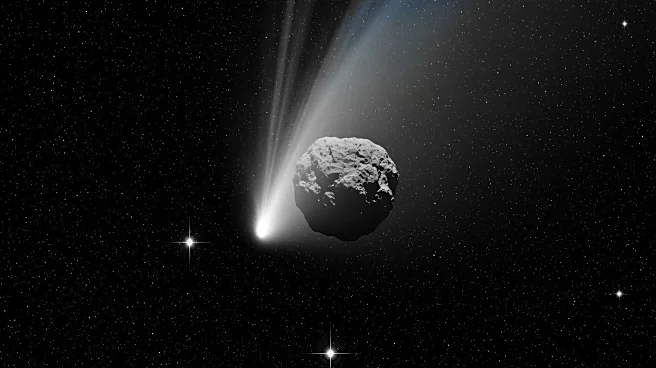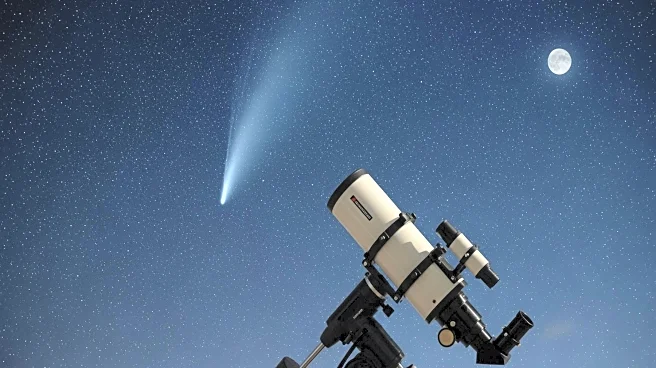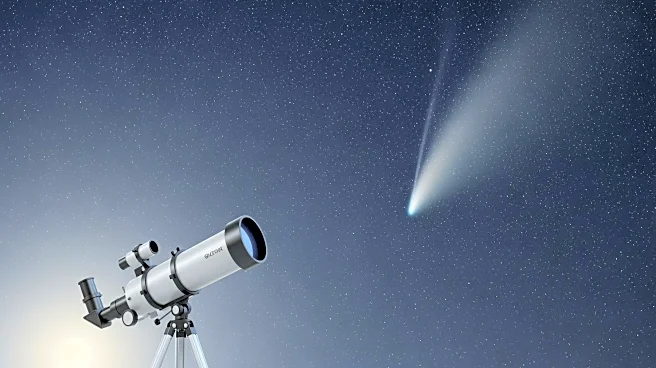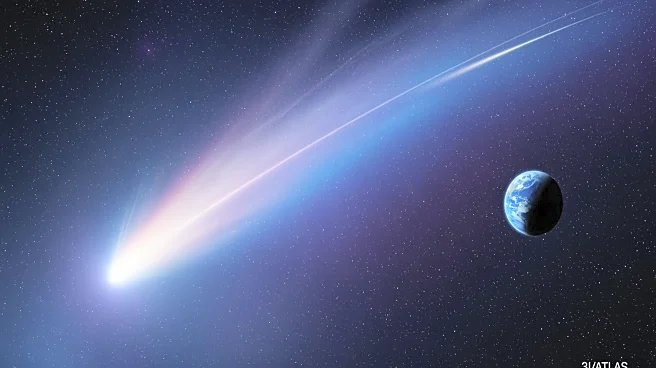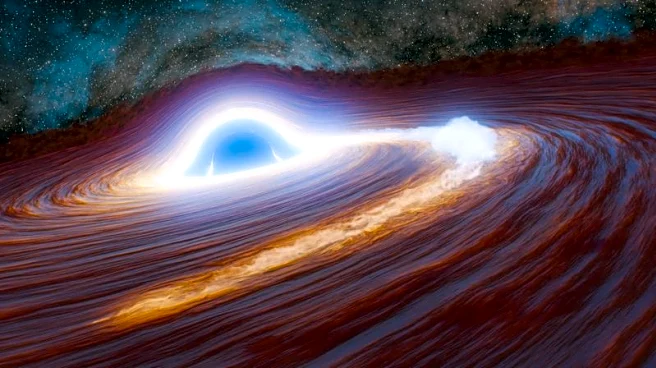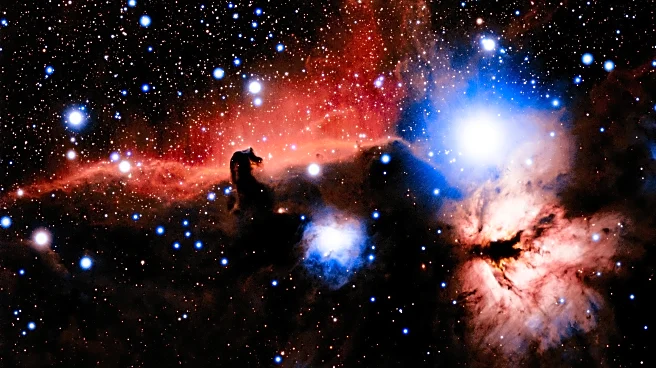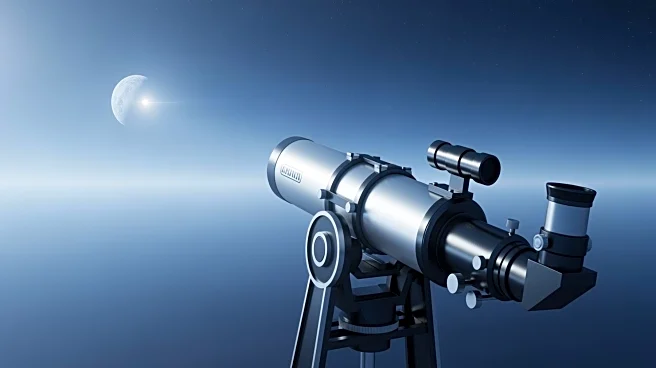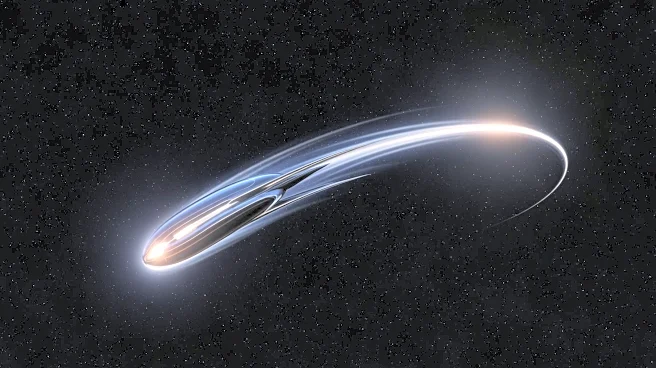What's Happening?
Comet 3I/ATLAS, an interstellar object, is now visible from Earth using small telescopes. Astronomer Yicheng Zhang from the Lowell Observatory in Arizona captured images of the comet, which is currently
visible in the morning twilight. The comet had previously been obscured by the Sun's glare but is now observable due to its position in the sky and the capabilities of certain telescopes designed for comet observation. Zhang used a Lowell Discovery Telescope, which can point closer to the Sun than most large telescopes, to capture the comet. The comet is expected to be most visible in December when it makes its closest approach to Earth.
Why It's Important?
The visibility of Comet 3I/ATLAS presents a rare opportunity for amateur astronomers and the general public to observe an interstellar object. This event highlights the advancements in telescope technology that allow for the observation of celestial bodies close to the Sun. The comet's visibility also sparks interest in space exploration and the study of interstellar objects, which can provide insights into the composition and behavior of celestial bodies from outside our solar system. The event may encourage educational and scientific engagement, as well as public interest in astronomy.
What's Next?
As Comet 3I/ATLAS approaches its closest point to Earth in December, visibility is expected to improve, offering more opportunities for observation. Astronomers and enthusiasts are advised to use telescopes with a clear view of the eastern horizon to track the comet. The trajectory of the comet is predictable, allowing for planned observations. This period may see increased activity in amateur astronomy communities and educational programs focused on comet observation.


